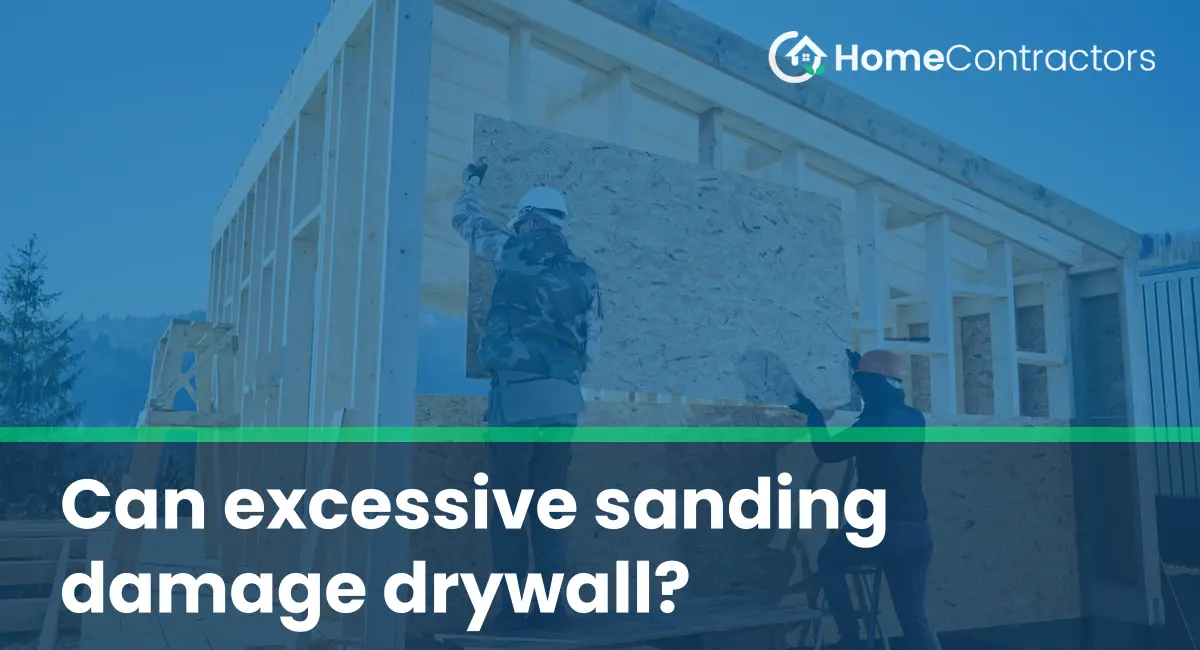Drywall is a popular material used in many homes and buildings for interior walls and ceilings. It is made of gypsum plaster, sandwiched between two layers of paper. One common task during the drywall installation or repair process is sanding. While sanding is necessary to achieve a smooth and even surface, excessive sanding can potentially damage the drywall. This article will explore the effects of excessive sanding on drywall and provide some tips on how to avoid damaging your walls.
Understanding the Purpose of Sanding:
Before delving into the potential damages that excessive sanding can cause, it’s important to understand the purpose of sanding drywall. Sanding is typically conducted after the joint compound, used to fill the gaps and seams between drywall sheets, dries. The purpose of sanding is to create a smooth and leveled surface by removing any excess compound, imperfections, or ridges.
Potential Damages Caused by Excessive Sanding:
1. Weakening the Paper Layer:
The outer layers of drywall are made of paper, which provides structural strength and adds fire resistance to the material. Excessive sanding can wear down this paper layer, making the drywall more vulnerable to physical damage. Over-sanding can lead to thinning of the paper, creating weak spots that may easily tear or puncture.
2. Creating Gouges and Divots:
Using too much pressure or a rough-grit sandpaper while sanding can result in the creation of gouges and divots in the drywall surface. These irregularities can be difficult to repair and may require additional joint compound and sanding to correct. Excessive sanding can also remove too much joint compound, causing the tape or patch to become visible and requiring further repairs.
3. Releasing Harmful Dust Particles:
Drywall sanding produces a significant amount of dust that contains gypsum, silica, and other potentially harmful substances. Excessive sanding can release an excessive amount of dust particles into the air, leading to respiratory issues and other health concerns. It is crucial to take proper precautions, such as wearing a mask and using a vacuum sander or dust collection system, to minimize the health risks associated with sanding.
Tips to Avoid Damaging Drywall:
1. Use the Right Tools:
Using the right tools can help prevent damage during the sanding process. Opt for fine-grit sandpaper and sanding sponges instead of coarse-grit sandpaper, which can be more aggressive on the drywall surface. Sanding sponges are flexible and can conform to the contours of the wall, providing a more even application of pressure.
2. Take it Slow:
Sanding should be done gradually, starting with light pressure and gradually increasing as needed. It is crucial to sand in small, controlled motions rather than exerting excessive force or sanding back and forth aggressively. This approach helps prevent the paper layer from wearing down too quickly.
3. Inspect Frequently:
While sanding, frequently check the surface for any changes or imperfections. This allows you to identify potential issues before they become more significant problems. By catching mistakes early, you can adjust your sanding technique and avoid excessive damage.
While sanding is an essential step in achieving a flawless finish on drywall, excessive sanding can indeed damage the material. Weakening the paper layer, creating gouges, and releasing harmful dust particles are just a few potential damages that can occur. By using the right tools, practicing a gradual and controlled approach, and frequently inspecting the surface, you can avoid excessive sanding and preserve the integrity of your drywall.
